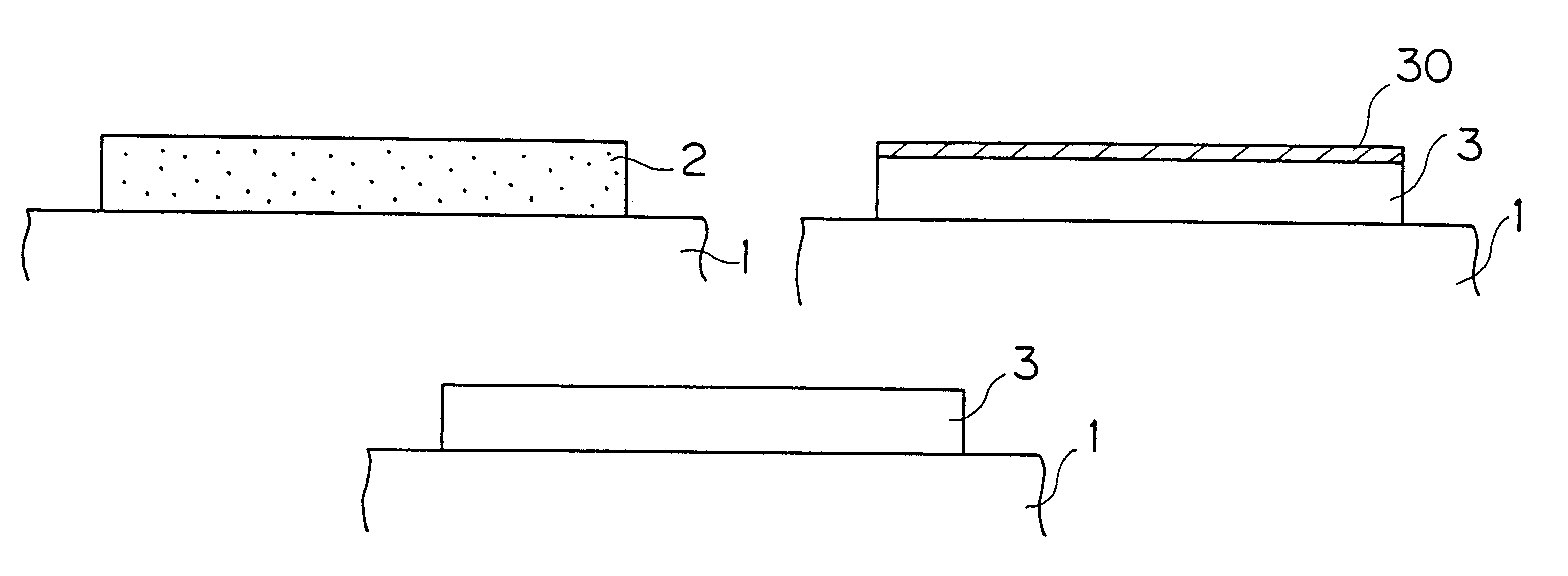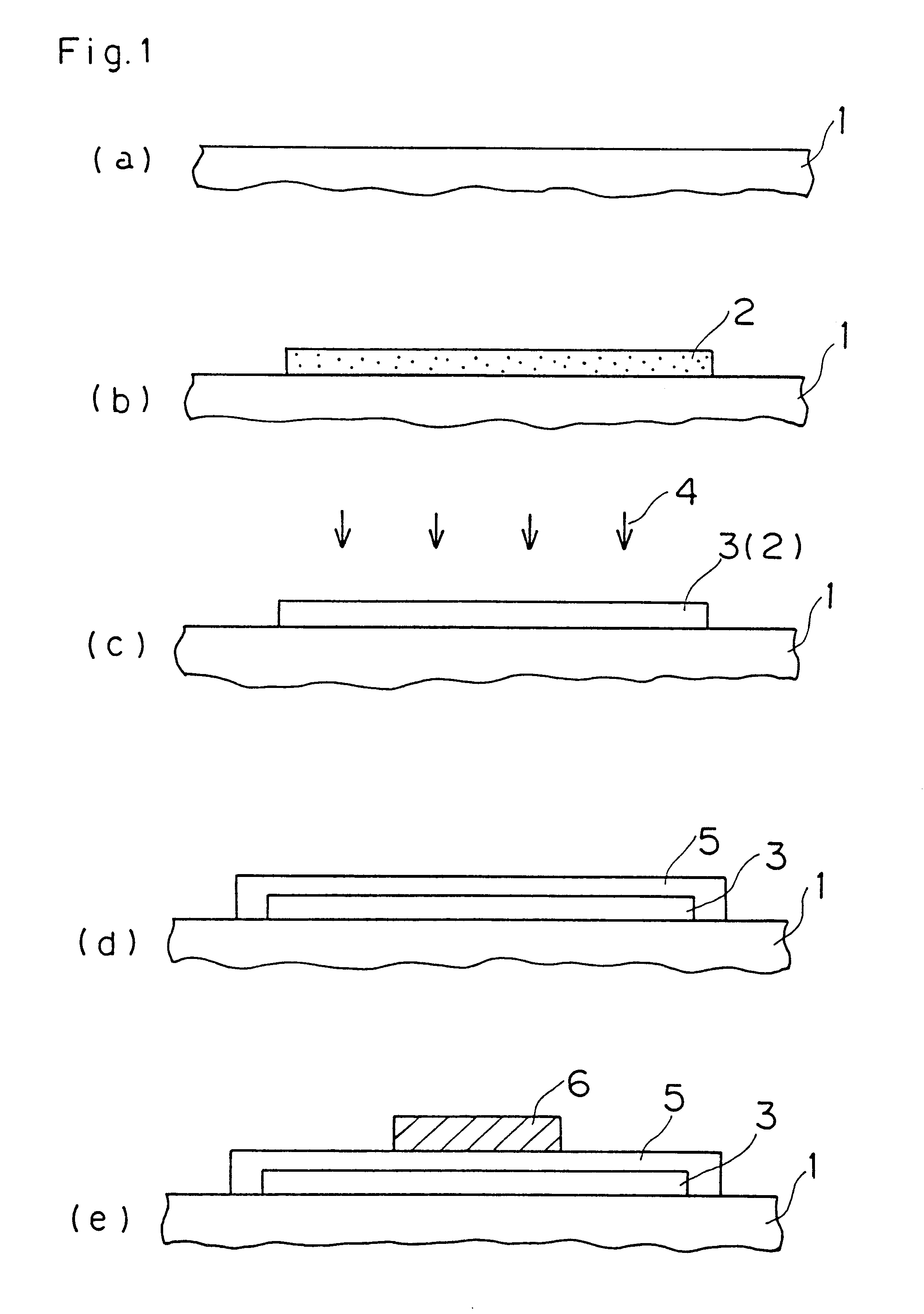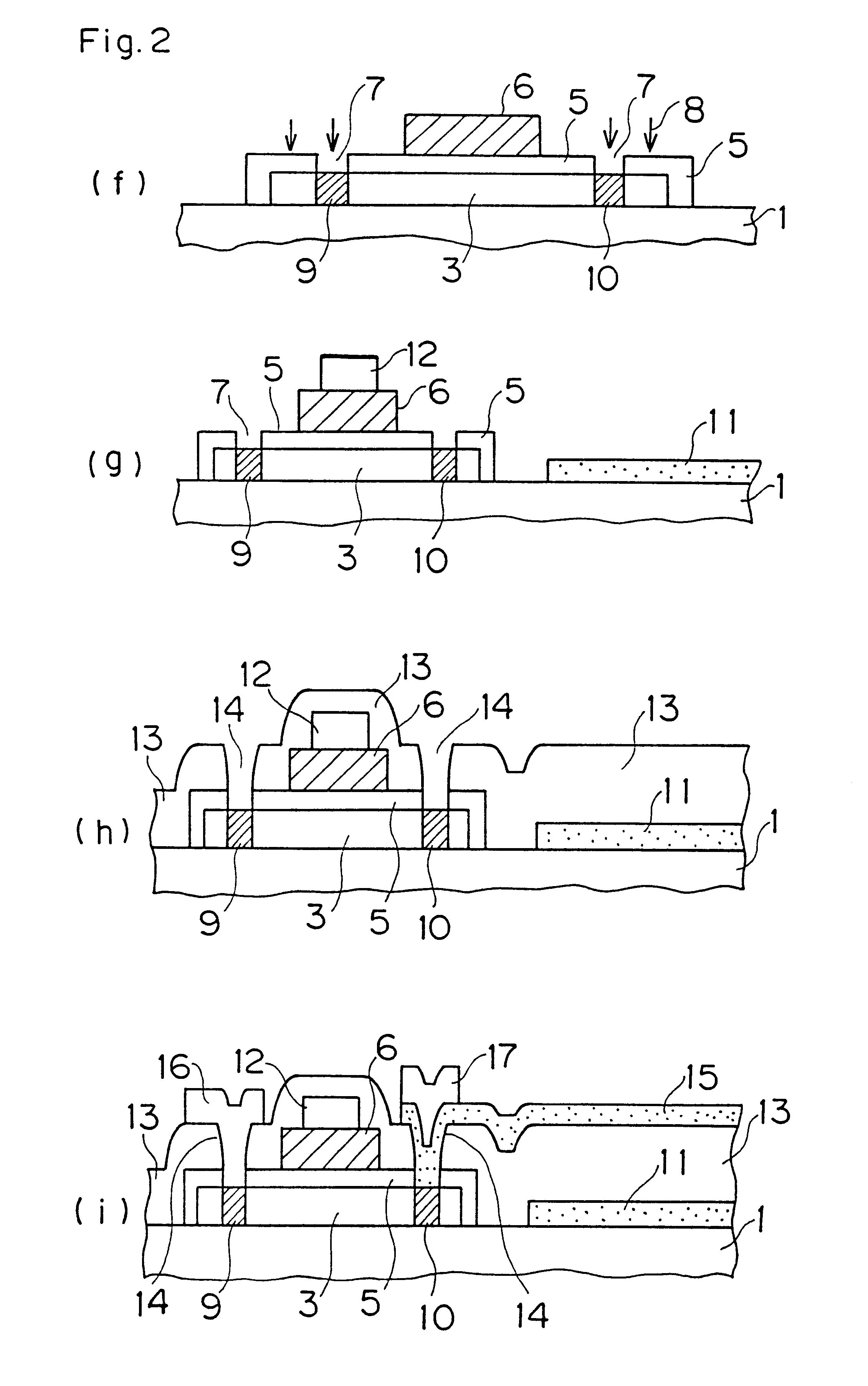Semiconductor device manufacturing with amorphous film cyrstallization using wet oxygen
a technology of amorphous film and manufacturing method, which is applied in the direction of after-treatment details, crystal growth process, radiation controlled devices, etc., can solve the problems of deteriorating the drivability of thin film transistors, high cost, and extremely irregular surface of polycrystalline silicon films
- Summary
- Abstract
- Description
- Claims
- Application Information
AI Technical Summary
Problems solved by technology
Method used
Image
Examples
second experimental example
This Experimental Example is different from first Experimental Example in a point that a high-temperature heat treatment was performed in an N.sub.2 atmosphere after solid-phase epitaxy.
First, an amorphous silicon film was formed on a quartz glass substrate by LP-CVD under film forming conditions shown in Table 6.
Then, an amorphous silicon film was epitaxially grown in a solid phase under the heat treatment conditions shown in Table 2, with employment of the apparatus shown in FIG. 10. Oxygen and wet oxygen which was prepared by the wet oxygen generator were mixed with each other in the flow rates shown in Table 2, and introduced into the silica tube 61.
Further, the interior of the silica tube 61 was heated along the temperature profile shown in FIG. 11, and kept in the heated state when the substrate temperature reached 600.degree. C., to make solid-phase epitaxy for 20 hours. Thereafter a heat treatment was performed in an N.sub.2 atmosphere at a temperature of 1050.degree. C. for...
third embodiment
A third embodiment according to the second aspect of the present invention is now described.
While the removal of oxygen which is an impurity in the film and the solid-phase epitaxy of the amorphous silicon film are simultaneously carried out by a single heat treatment in the aforementioned method according to the second embodiment, these steps may alternatively be carried out independently of each other. FIGS. 13(a) to 13(d) are explanatory diagrams showing steps of fabricating a polycrystalline silicon film by such a method.
The steps shown in FIGS. 13(a) and 13(b) are similar to those of the second embodiment described with reference to FIGS. 9(a) and 9(b), and hence redundant description is omitted.
Following these steps, a heat treatment is performed at a low temperature causing no crystallization of an amorphous silicon film 2 to be capable of removing oxygen from the film in this embodiment, as shown in FIG. 13(c). In this case, heat treatment conditions are set as follows:
First...
fourth embodiment
A fourth embodiment according to the second aspect of the present invention is now described.
FIGS. 15(a) to 15(d) are sectional views showing steps of fabricating a solar cell (photovoltaic device) according to the fourth embodiment of the present invention. The fabrication process for a polycrystalline silicon film according to the second aspect of the present invention is also applicable to a polycrystalline silicon electrode for a solar cell, as hereafter described. The steps of fabricating a solar cell are now described with reference to FIGS. 15(a) to 15(d).
First, an n-type amorphous silicon film 51 which is doped with phosphorus (P) and a non-doped amorphous silicon film 52 are continuously formed on a surface of a substrate 50 consisting of a high melting point metal by plasma CVD or the like, as shown in FIG. 15(a).
Then, a heat treatment is performed in a wet oxygen atmosphere, to epitaxially grow the n-type amorphous silicon film 51 and the non-doped amorphous silicon film ...
PUM
 Login to View More
Login to View More Abstract
Description
Claims
Application Information
 Login to View More
Login to View More - R&D
- Intellectual Property
- Life Sciences
- Materials
- Tech Scout
- Unparalleled Data Quality
- Higher Quality Content
- 60% Fewer Hallucinations
Browse by: Latest US Patents, China's latest patents, Technical Efficacy Thesaurus, Application Domain, Technology Topic, Popular Technical Reports.
© 2025 PatSnap. All rights reserved.Legal|Privacy policy|Modern Slavery Act Transparency Statement|Sitemap|About US| Contact US: help@patsnap.com



